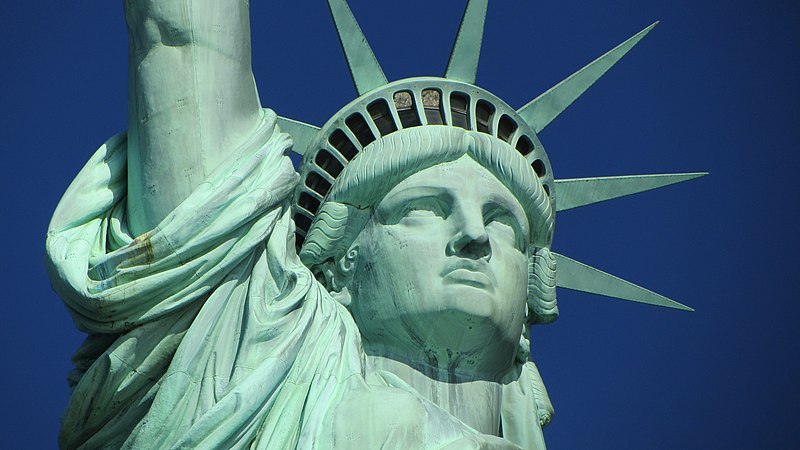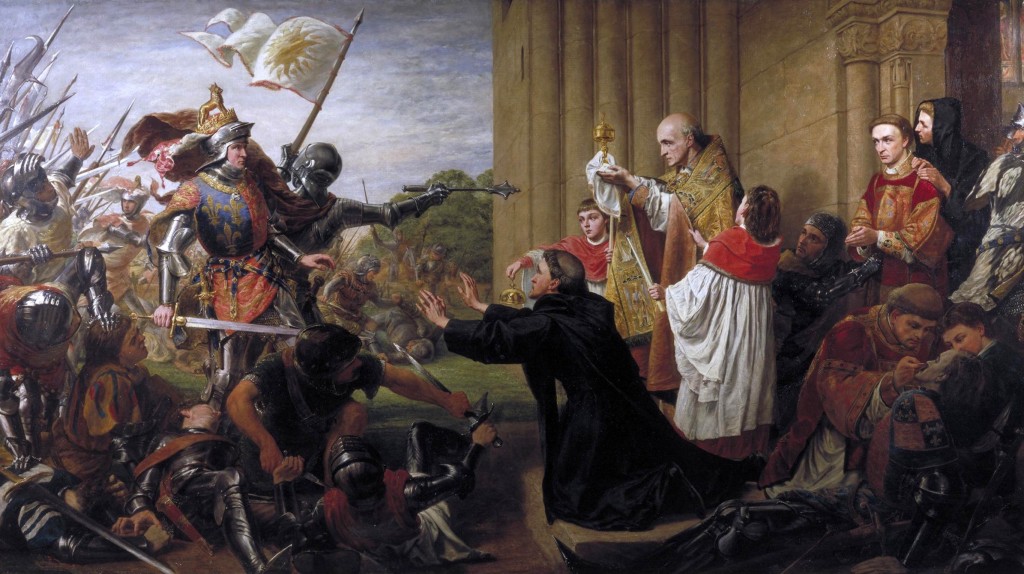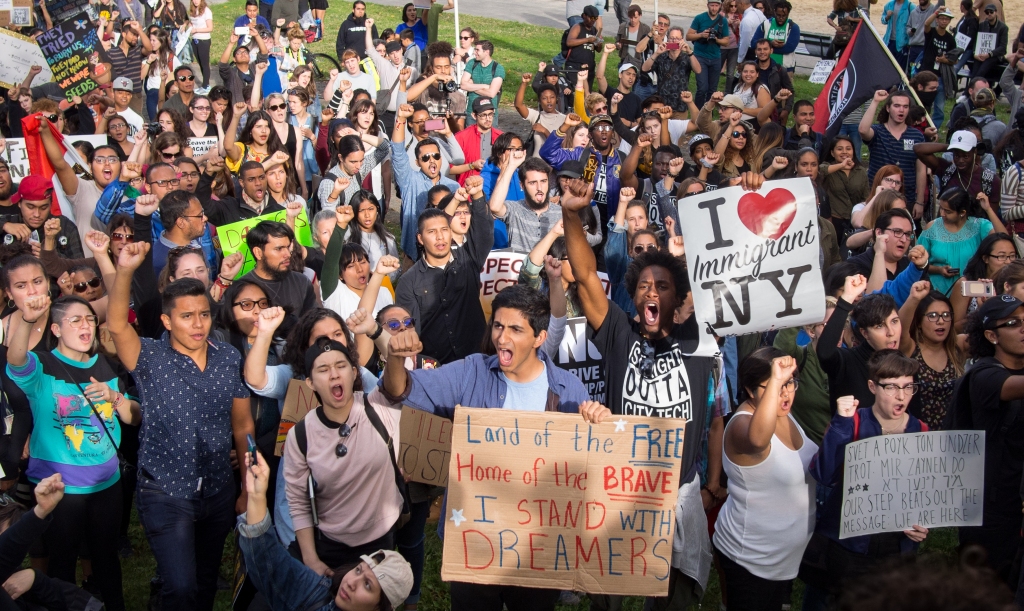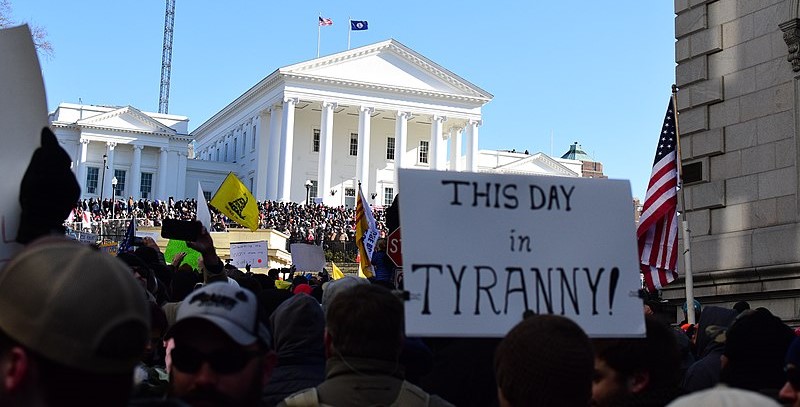An in-depth look at dueling definitions of ‘sanctuary’ in America and Southwest Florida and what they mean for the future

July 7, 2021 by David Silverberg
Today the term “sanctuary” has taken on new meaning and is serving as a new cause of political controversy and contention.
This conflict is coming to a head in Southwest Florida—specifically in both Naples and Collier County—as movements to create sanctuary jurisdictions based on political criteria roil an otherwise placid region best known for its sunshine and beaches.
To understand the current conflict, it helps to go back into history and survey the evolution of the concept of sanctuary.
What are the origins of that concept? In the American political context, what were the sanctuaries of the past? What are the new concepts and how do they differ from previous concepts?
In a local context, how are these clashing concepts playing out in the American state of Florida—and especially in Southwest Florida?
And lastly, where is this heading and how is it likely to resolve itself?
Origins

The notion of a place of sanctuary is very ancient.
The ancient Greeks and Romans revered groves and temples where people could find refuge from the forces that threatened them. In ancient Rome even slaves could find sanctuary at statues of gods and owners who otherwise possessed them would respect the site.
But it was in the Middle Ages that what is commonly thought of today as sanctuary made its appearance. By the thirteenth century a person could take refuge from secular authorities or a mob in a church. The refugee was allowed 40 days of safety during which time he had to be fed and protected; meanwhile, the interlude afforded time for negotiations, clemency, confession or proof of innocence. If none of those things took place, the refugee left the church, forfeited his goods and went into exile—but stayed alive.
Perhaps the most famous illustration of a medieval appeal for church sanctuary occurs in the novel (and movies) of The Hunchback of Notre Dame when the hunchback Quasimodo rescues the gypsy girl Esmeralda from hanging and, crying “sanctuary!” takes her into the cathedral for protection.
There have been other acts of sanctuary since then: French Huguenots were given refuge in England in 1681 in what may have been the first instance of a state offering sanctuary to another’s nationals. Today the concept of asylum has taken the place of the religious concept and been formalized between countries.
But in the United States the concept of sanctuary took different forms than in Europe—and for very different reasons.
The American context

From the day in 1620 that the Pilgrims set foot on Plymouth Rock, the continent of America became a sanctuary for people fleeing religious persecution.
After the American revolution, President George Washington best expressed the American sense of tolerance and sanctuary in an August 17, 1790 letter to the Jewish congregation at Newport, Rhode Island, in which he said: “All possess alike liberty of conscience and immunities of citizenship. It is now no more that toleration is spoken of, as if it was by the indulgence of one class of people, that another enjoyed the exercise of their inherent natural rights. For happily the Government of the United States, which gives to bigotry no sanction, to persecution no assistance requires only that they who live under its protection should demean themselves as good citizens, in giving it on all occasions their effectual support.”
The concept of sanctuary was deeply woven into the social fabric of the United States. It was next tested by the greatest moral challenge of the 19th century: slavery.
Beginning in the late 1700s anti-slavery activists using a variety of routes became known as the Underground Railroad, providing escaping slaves assistance and sanctuary on their way to ultimate sanctuary in non-slavery locations, chiefly Canada.
In the 20th century there were waves of dissent that gave rise to sanctuaries. In the 1960s dissident churches gave sanctuary to civil rights activists and Vietnam War draft resisters. Many Vietnam war resisters and those giving them sanctuary were arrested.
In the 1980s during the administration of President Ronald Reagan, Cold War conflicts in Latin America led to a rise in political refugees fleeing to the United States from countries like Nicargua, where the US was supporting a “Contra” movement against the communist government and El Salvador where the US was advising a repressive government.
“Sanctuary widened from the idea of a church to sanctuary communities who confronted immigration policies and intolerance as manifested in immigration policies,” writes Rhonda Shapiro-Rieser in the 2017 paper The Sanctuary Movement: A Brief History. “These actions included legal help and provision of shelter in private homes and other settings. They provided shelter in churches and homes, and created a modern Underground Railroad for refugees.”
As with the Vietnam War sanctuary movement, periodically the federal government would crack down on the sanctuaries and their refugees. Federal authorities arrested refugees and the Immigration and Naturalization Service deported them.
In the 21st century the 2016 election of President Donald Trump gave rise to immediate fears of deportation of “Dreamers;” undocumented US residents who had come to the country as children and been protected by the Deferred Action for Childhood Arrivals (DACA) program. During his campaign Trump said he would abolish DACA and deport the nearly 700,000 people, many of whom had known no other home.
Within days of Trump’s Nov. 3, 2016 election, his brutalist and threatening anti-immigrant and racist rhetoric led to a wave of “sanctuary campuses” at American colleges to protest his approach and provide refuge to migrants and Dreamers. From campuses the concept spread to cities.

The “sanctuary city” of the Trump era was one that refused to cooperate with federal deportation efforts. When a migrant was arrested, officials of the Immigration and Customs Enforcement (ICE) directorate of the Department of Homeland Security (DHS) would issue a “detainer” requesting a 48 hour delay before the person was released so that his or her immigration status could be checked. If the detainee was found to be undocumented, the person would be subject to deportation. In “sanctuary cities,” officials refused to honor detainers.
The sanctuary city movement was based on the conviction that Trump administration policies were rooted in prejudice and persecution and therefore unjust. It took hold mainly in the Pacific northwest, the Atlantic northeast, California, the upper Midwest and in Colorado.
Although there were no declared sanctuary cities in Florida, on June 14, 2019, Gov. Ron DeSantis signed a law outlawing sanctuary cities for migrants in the state.
Backlash

Taking a leaf from the immigration sanctuary cities movement, conservative groups began using the “sanctuary” label for causes they regarded as threatened by the federal government.
To date, these causes have been protecting gun ownership, prohibiting abortion and nullifying federal laws.
“The push to impose ‘sanctuary’ and similar legislation is not the result of an organic, grassroots movement but rather a well-funded campaign marketed by the gun lobby and supported by antigovernment extremist groups such as Gun Owners of America, Oath Keepers and the Constitutional Sheriffs and Peace Officers Association (CSPOA),” according to the Southern Poverty Law Center.
Gun sanctuaries
On Dec. 14, 2012, 20-year-old Adam Lanza shot and killed 20 six and seven-year old children, six adult staff and himself at Sandy Hook Elementary School in Newton, Conn. It was perhaps the most traumatic mass shooting in American history.
The shooting resulted in a wave of revulsion across the country and renewed calls for gun controls, some of which resulted in the passage of new laws governing gun ownership. This in turn led to a counter-effort.
On May 22, 2013, in response to the state of Maryland passing the Maryland State Firearms Act (MFSA) restricting the sale of different types of firearms, requiring their registration and limiting the size of magazines, the Carroll County Board of Commissioners adopted a resolution calling the county a “Second Amendment Sanctuary County.”
The Carroll County resolution announced that the county would not “authorize or appropriate government funds, resources, employees, agencies, contractors, buildings, detention centers or offices for the purpose of enforcing any element of the MFSA that infringes on the right of people to keep and bear arms… .”
While Maryland’s Harford and Cecil counties also passed such resolutions, this was the first time the word “sanctuary” was used in such an official measure, according to one account. According to another, in 2018 it was Monroe County, Illinois that was the first to use “sanctuary.”
Since then, similar resolutions have been passed by states, counties and municipalities across the country. There was another wave of resolutions following the Parkland, Fla., high school massacre of Feb. 14, 2018. As of July 2021, about 1,200 local governments in 42 states had adopted such resolutions.
In Southwest Florida, Collier County passed a resolution declaring it would not “assist, support or condone” any infringement of the Second Amendment on Feb. 26, 2013 but did not use the word “sanctuary.” Lee County passed a resolution on March 25, 2013, DeSoto County declared itself a gun “haven” on Jan. 21, 2020, and Charlotte County declared itself a gun sanctuary county on May 11, 2021.

Anti-abortion sanctuaries
On June 22, 2019 anti-abortion activist and preacher Mark Lee Dickson convinced the town council of Waskom, Texas, population 2,189, to pass an ordinance creating a “sanctuary city for the unborn.”
(For a fuller account of Dickson, the anti-abortion sanctuary movement and Naples, Fla., see: “‘Sanctuary city for the unborn’ movement threatens Naples, Fla., economic recovery.”)
Since Waskom, 32 towns and cities have voted in anti-abortion ordinances, according to the Sanctuary Cities for the Unborn website.
Of these, 29 are in Texas, of which the largest is Lubbock, population 278,831; two are in Nebraska (tiny Hayes Center, population 288 and Blue Hill, population 941); and one is in Ohio (Lebanon, population 20,529). Eight Texas cities are counted as “denying” an ordinance and the movement calls the state capital of Austin a “city of death” for its adamant opposition. The movement is aiming at 39 potential new sanctuary cities in Texas and one in Florida—Naples.
The movement continues its efforts, proclaiming that it is “Protecting our cities by outlawing abortion, one city at a time.”
Anti-federal sanctuaries
With the debate over pandemic masking and other health measures in 2020 and in the wake of President Donald Trump’s defeat and the failure of the Jan. 6, 2021 insurrection, there was a new wave of “bill of rights sanctuary” efforts—essentially anti-federal sanctuaries—primarily in the southern United States.
These had their genesis in the gun sanctuary movement but went even further, back to the Posse Comitatus movement that began in the late 1960s. That movement held that local sheriffs were the highest ranking law enforcement officers in any county and no higher legal authority should be recognized. That, in turn, gave rise to a Constitutional Sheriffs and Peace Officers Association founded in 2011 to get local sheriffs to uphold the Second Amendment by refusing to enforce any state or federal restrictions on gun ownership.
The premise of these ordinances is that the federal government, having fallen into hostile hands, is now going to try to violate rights enumerated in the Bill of Rights—mainly the Second Amendment. Under these ordinances, localities, primarily at the county level, refuse to cooperate with any federal actions they regard as unlawful.
Who would determine that the Bill of Rights was being violated, what exactly constitutes a violation and how it will be remedied is unclear.
By specifically calling on states and counties to “nullify” federal actions the movement harkens back to the pre-Civil War debate over “nullification,” when South Carolina politicians argued that they had the right to nullify federal laws with which they disagreed. In 1830 that idea was crushed by Sen. Daniel Webster of Massachusetts in the Senate (who concluded with the memorable line: “Liberty and union, now and forever, one and indivisible!”) and President Andrew Jackson, a southerner, who notably declared in a dinner toast: “Our federal union! It must be preserved!”
The current movement has a number of drivers. Organizations include Gun Owners of America, a non-profit lobby founded in 1976, which “sees firearms ownership as a freedom issue.” Another is Oath Keepers, the extremist organization of current and former military and law enforcement personnel whose members participated in the Jan. 6 insurrection and are being prosecuted.

An activist and nullification evangelist based in northern Florida is KrisAnne Hall, who characterizes herself as a “constitutionalist.” She has associated with far right and white nationalist groups, providing legal justifications for extremist anti-government beliefs. In YouTube videos and speaking engagements Hall preaches a pre-Civil War interpretation of constitutional relations and actively promotes nullification.
Addressing people who would pass nullification ordinances, in an April 21, 2021 video Hall stated: “If [your] law does not state that ‘we will not enforce this law’ and ‘we will not allow the federal government to enforce these laws here;’ if your law does not contain that language, it is useless!” she argued.
“We’ve got states out there that are trying to walk the fence, trying to placate you with their ‘Second Amendment sanctuaries’ and they’re going to turn around and say, ‘OK, we’re not going to enforce these laws but the [Bureau of Alcohol, Tobacco, Firearms and Explosives] can come in and do it, the [Federal Bureau of Investigation] can come in and do it, DHS can come in and do it, whatever, the [Internal Revenue Service] can come in and do it. That’s not sanctuary, people, that’s setup. That’s enticement, that is entrapment, that is wrong.
“And so if your law does not include some kind of restriction and penalty for the federal government exercising those laws in your state, it is not a good law,” she insisted.
Hall came to Southwest Florida on April 24, 2021 to address the Republican Club of South Collier County, where she shared a stage with Dan Cook, a Naples-based far right activist, and Alfie Oakes, the grocer and owner of Seed to Table.
A nullification “Bill of Rights sanctuary” ordinance was put on the agenda of the Collier County Commission on June 22. It is due to be considered next Tuesday, July 13.
Analysis: Insurrection by other means
The anti-federal, anti-abortion sanctuary movement has remained largely under the media radar, spreading in rural areas among small towns that rarely get national attention. To most Americans it no doubt seems fringe, odd and often absurd, so it has long been ignored.
But it bears attention because it is an effort to subvert and, indeed, overthrow the authority of the federal government and replace it with—what? Its advocates want to treat the nation’s laws, Constitution and Bill of Rights like a buffet whose offerings they can pick and choose or ignore if they wish. But law doesn’t work that way and the only alternative seems armed anarchy.
The anti-federal sanctuarists (and you read that word correctly, for the first time here) can make the argument that the left (or in the usual formulation, the radical Democratic left) started the sanctuary movement first.
They have a point. But there are important differences between what we’ll call “social” sanctuaries and “nullifying” sanctuaries.
In the American political definition, no matter who asserts it, “sanctuary” is an effort to carve out an exemption or exception from federal law—which should be uniformly applied and enforced across the country.
The social sanctuaries—the Underground Railroad, Vietnam resistance, Central American refuges, DACA and migrant sanctuaries—were all illegal and were acknowledged as such. They were acts of civil disobedience in which the participants were aware they were breaking the law and could face the penalties. They did it nonetheless because they felt they were serving a higher moral cause.
The nullifying sanctuaries—the anti-abortion and anti-federal sanctuary movements—are attempts to cancel federal law, the Constitution and Bill of Rights through creation of what is essentially a counter-government where federal law does not apply.
When it comes to local governments the big difference between the anti-abortion and anti-federal sanctuary movements and their gun sanctuary predecessor is that they are trying to impose ordinances on their jurisdictions—rules with the force of law and penalties for violations. Previously, towns and counties passed resolutions, which expressed an opinion or sentiment and did not carry penalties.
By denying the jurisdiction of federal law, the nullifying sanctuary movements are actually practicing insurrection by other means.
By passing these ordinances, states, counties and municipalities are starting down a slippery slope whose logical end is the creation of a separate polity subject to its own laws and sovereignty. This is also known as insurrection, rebellion or secession. The ordinances may pay lip service to the Bill of Rights but in fact they are rejecting the United States Constitution with its Bill of Rights, all the other amendments and protections of the rule of law.
Americans have fought and died to prevent that kind of insurrection. Just because this movement is legalistic and non-violent doesn’t make it any less dangerous to the cohesion and indivisibility of the United States.
The battlefield for America’s future has moved from the walls of the Capitol building to the small towns and rural counties of its heartland but the stakes are no less high.
America has been here before. It has faced and overcome rebellion, nullification, secession and most recently insurrection. It now needs to overcome the threats to the Constitution and the Bill of Rights cloaked in the language and the trappings of sanctuary. The choice is between constitutional democracy and anarchy.
Anyone looking for a sanctuary for freedom and the rights of the individual need look no further than the United States itself and its Constitution. It’s the greatest sanctuary in history.
Now it’s up to every truly patriotic American citizen to ensure that it remains that way.
The Collier County Commission’s next meeting is scheduled for Tuesday, July 13 at 9:00 am. Public petition speakers are limited to ten minutes and general address speakers to 3 minutes. The Commission Chambers and Commissioners’ offices are located on the third floor of the Administration Building at 3299 Tamiami Trail East, Suite 303, Naples, Fla.
Meetings are also aired live on Collier Television CTV and are available online via Video On Demand.
To reach commissioners:
Rick LoCastro
- District 1
- Rick.LoCastro@colliercountyfl.gov
(239) 252-8601
Andy Solis
- District 2
- Andy.Solis@colliercountyfl.gov
- (239) 252-8602
Burt Saunders
- District 3
- Burt.Saunders@colliercountyfl.gov
(239) 252-8603
Penny Taylor
Chair
- District 4
- Penny.Taylor@colliercountyfl.gov
(239) 252-8604
William L. McDaniel, Jr.
- District 5
- Bill.McDaniel@colliercountyfl.gov
(239) 252-8605
To read more about past sanctuary movements:
What’s the history of sanctuary spaces and why do they matter? by Elizabeth Allen
The sanctuary movement: A brief history by Rhonda Shapiro-Rieser
Talk on the logic of sanctuary, given at Duke University by Elizabeth Bruening
How Trump’s war on sanctuary cities affected immigrants by Felipe de la Hoz
Liberty lives in light
© 2021 by David Silverberg
Thanks, David, for the informative and thorough report, and also for the thoughtful commentary.
LikeLike
Thank you for this report. I’m horrified by these “sanctuary” ordinance proposals. This is sedition. I’ll be signing up to speak against the Collier County ordinance at the July 13, 2021 meeting. I hope to see you and other like minded people there. We must push back against this. My District 1 Commissioner claims that everyone he has spoken to is in favor of this. He’s about to find out just how untrue this is.
LikeLiked by 1 person
A thorough and well-written piece, as usual.
The cities of refuge, described in Leviticus, were also sanctuary cities.
It’s interesting that the words “gives to bigotry no sanction, to persecution no assistance” were first used by Moses Mendes Seixas in his letter to Washington on Washington’s visit to the Touro Synagogue in Newport, RI. Washington then echoed the phrase in his return letter.
LikeLike